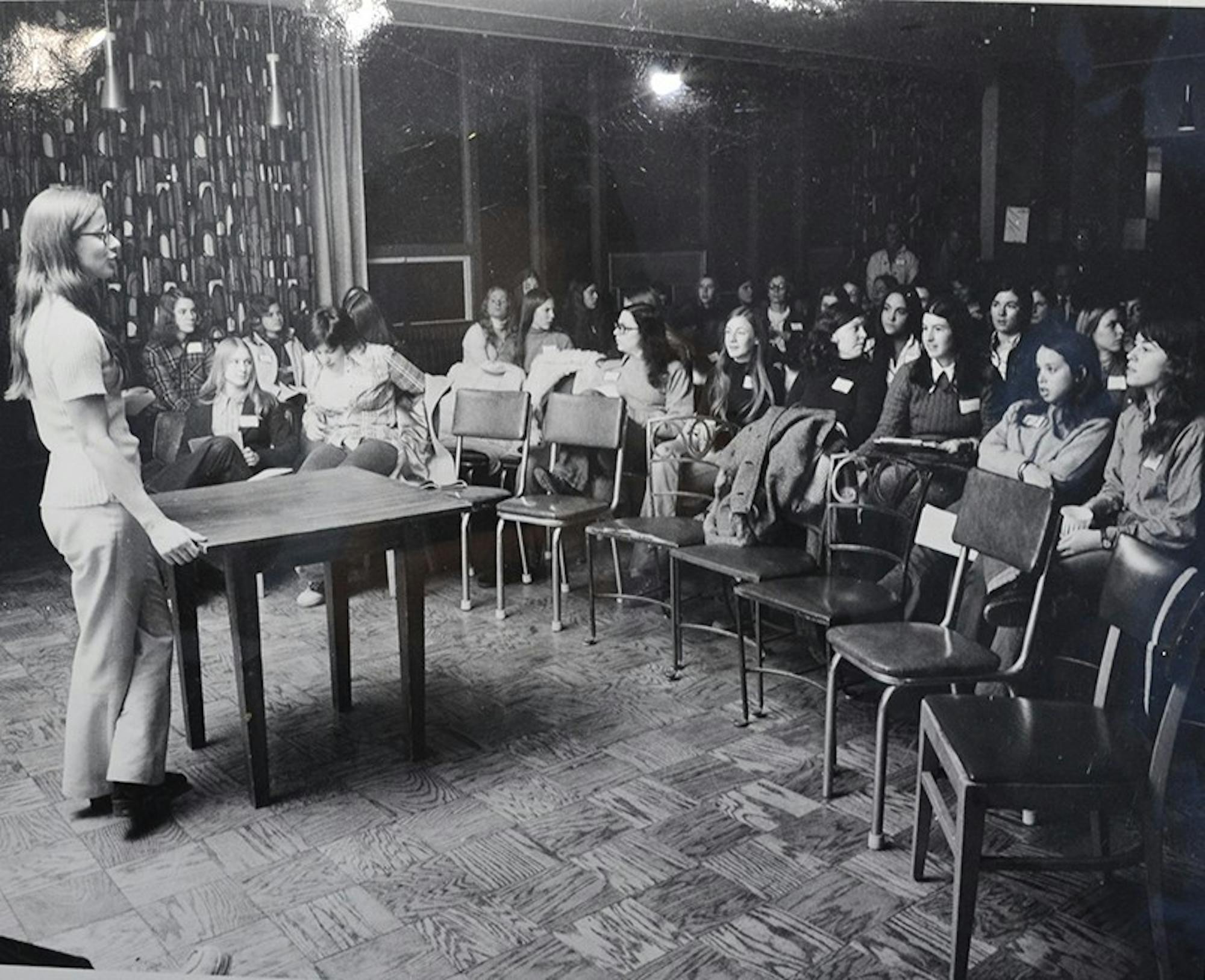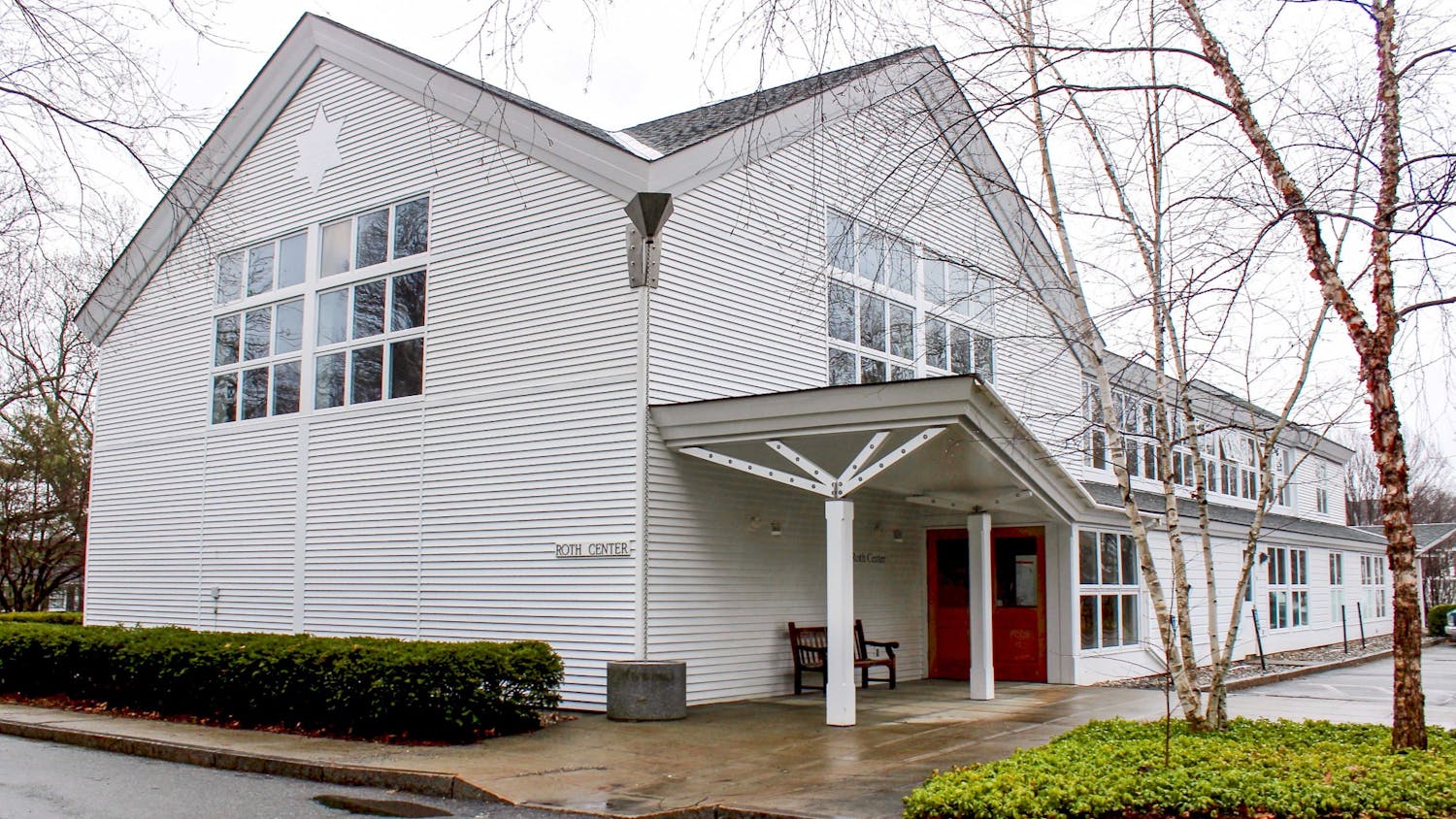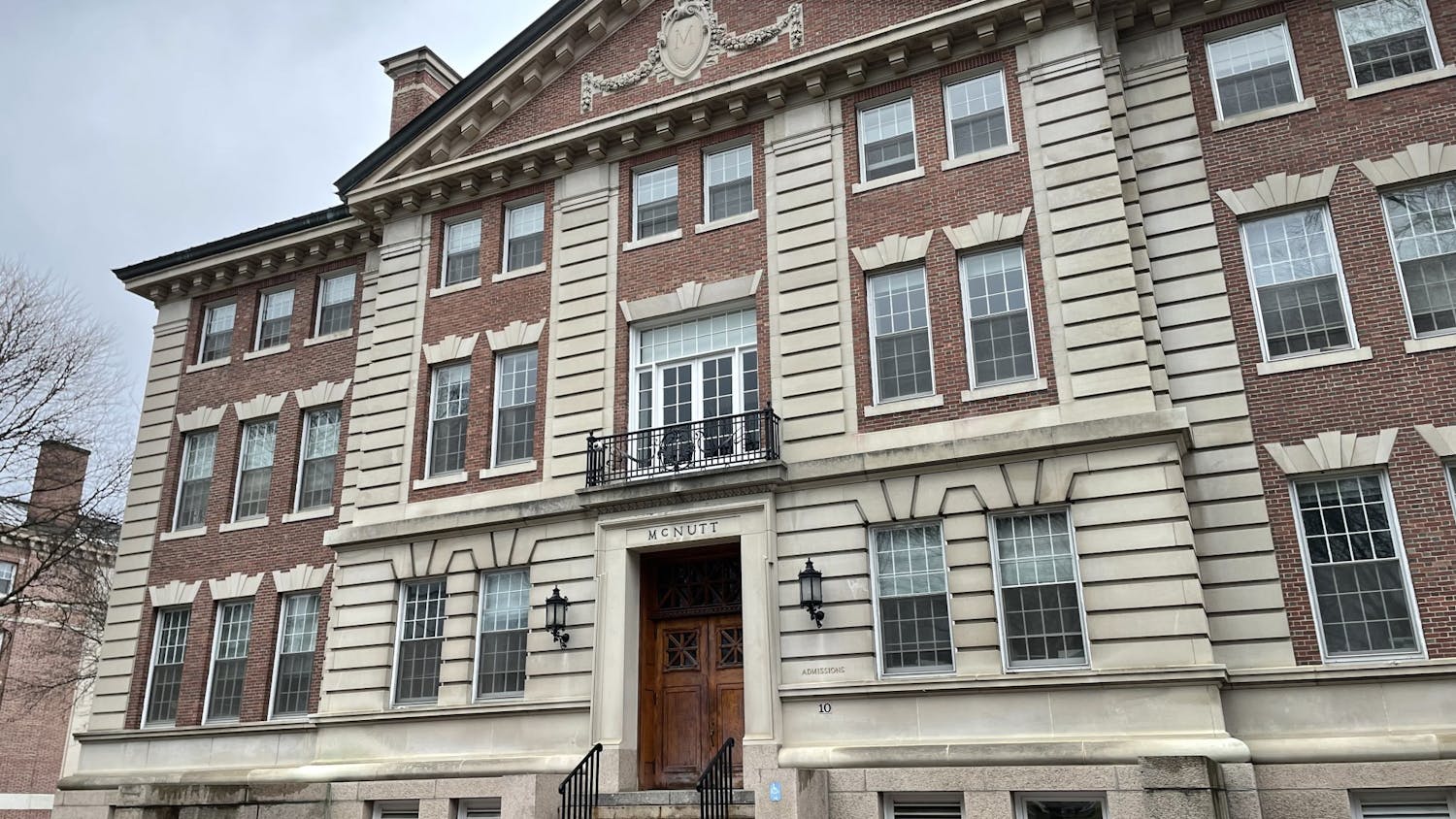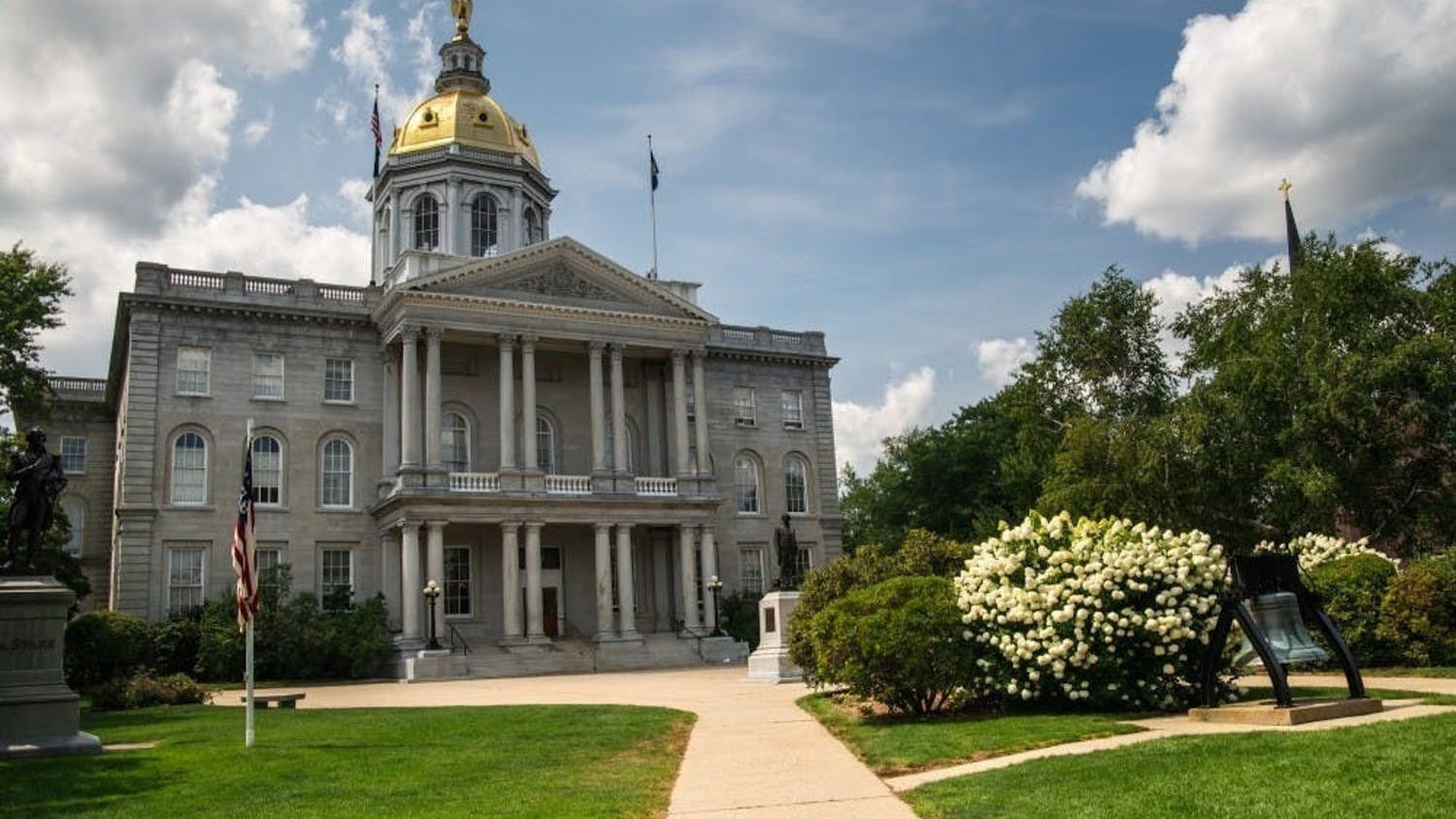Though the College generally matches its peers in the Ivy League in female representation and outperformed other schools across the country, women remain underrepresented in all of Dartmouth’s graduate schools, both in the student body and on the faculty. Each of the schools at Dartmouth — the Geisel School of Medicine, the Tuck School of Business and the Thayer School of Engineering — have sought to improve gender parity on both levels.
Geisel had 791 students enrolled in the fall of 2015, 42 percent of whom were male and 58 percent of whom were female, according to the Dartmouth Fact Book. At Tuck, 37 percent of the school’s 571 students were female, while at Thayer women made up 28 percent of its 257 students. There were an additional 791 graduate students studying through the College of Arts and Sciences, 48 percent of whom were women.
All of the professional schools have also seen upward trends in female enrollment over the years. In 2002, only 45 percent of students at Geisel were women, while at Tuck only 28 percent were. In the period in between, both schools have seen fluctuations in their gender rations — Tuck, for example hit a low point at 24 percent in 2004. Both also saw record high levels in 2015. Thayer, meanwhile, had the same 28 percent female enrollment in 2002 as it does today, though it hit a high of 34 percent in 2012.
The Forté Foundation, a nonprofit organization dedicated to increasing women’s opportunities in business that partners with various schools and businesses, released a report in 2015 listing Tuck as one of 12 business schools with female enrollment levels in full-time MBA programs of over 40 percent — among the highest in the country. Tuck dean Matthew Slaughter also announced in a welcome letter to the Class of 2017 that 42 percent of its students would be women.
Some of these numbers are expected to go up in the coming fall. Thayer dean Joseph Helble, for example, said he anticipated around 30 to 35 percent of the incoming class to be female, although admissions decisions have not been finalized.
There are also gender disparities in female representation at the faculty level. At Geisel, around 149 of the faculty were women out of 335 total in 2015. Fifteen of Tuck’s 66 professors were women, as were 10 of Thayer’s 58.
Since 2004, Geisel’s number of female faculty has steadily increased, from 99 women, representing 33.1 percent of the faculty, to 149 today. Tuck had 12 female faculty members, representing 19.7 percent, in 2004, and reached a peak in 2007, with 19 female professors making up 28.8 percent of the total. Thayer has seen mixed growth across the years, but currently has a record high in terms of absolute numbers of professors. In terms of percentages, though, they had greater gender representation in 2013 and 2014, when 18 percent of faculty were women.
Each school has made efforts to increase the diversity of their student bodies and faculty, including their gender breakdowns. Director for strategic initiatives at Tuck Dia Draper said that Tuck, for example, has partnered with groups like the Forté Foundation, Management Leadership for Tomorrow, and the Consortium for Graduate Study in Management. She attributed these partnerships as part of the reason for Tuck’s increases in female enrollment over the past few years. Draper also noted that many businesses today are demanding more female employees to boost their own diversity, creating a stronger demand for MBAs among women as well.
Draper said that Tuck remains in the early stages of figuring out how to recruit more female faculty members. Slaughter and associate dean for the faculty Richard Sansing both value this heavily, she said, and have been trying to educate themselves on how to form effective search committees and avoid implicit biases that could come up while conducting these searches.
Hilary Modjeska Tu’16 said that she doesn’t think much about being a woman during her day-to-day life at Tuck, as women and men at the school have generally similar experiences. While the school has frequent discussions about gender biases and pay gaps in the workforce, within the school she does not notice much division.
Modjeska said she came to Tuck in part because of the community, which she described as inclusive, as well as for the opportunities for personal and professional growth. She said this inclusive community likely attracts many women to Tuck, as do active efforts to recruit female students. She also noted that Tuck has focused recently on holding more discussions about diversity and inclusivity, a trend that she hopes continues.
In the fall, Modjeska co-chaired the annual Women in Business conference, which invites prospective female students to visit the campus for two days and speak with current students. Around 80 to 90 people attend each year, she said. She said feedback for the program has been positive, and that its two-day duration gives prospective students a great chance to learn more about Tuck.
Helble discussed gender diversity in two types of programs at Thayer: engineering management and doctoral students. For engineering management, Helble said that the admissions office actively seeks to encourage women to apply. More women applying results in a positive feedback loop effect in which women see strong female representation at Thayer and feel more comfortable applying, he said.
For doctoral programs, Helble said that there are limitations in the school’s ability to attract female students. As doctorate students typically seek out particular faculty to work with, attracting those students on criteria besides their field of specialty can be difficult. One way the school has managed to increase the diversity of its applicant pool is by looking at students from a wide variety of disciplines, he said. Since some fields like the life sciences are much more representative of women, the applicant pool also becomes more diverse.
Helble highlighted Thayer’s Ph.D. Innovation Program as another example of the school successfully making itself more welcoming to female candidates. The program, which began in 2008, had no female applicants for its first two years, he said. In response, Thayer interviewed female undergraduates and asked why they were not applying to the program in order to better understand how to meet their needs. They also began marketing it much more heavily at conferences and through female faculty and staff. As a result of these efforts, female enrollment in the program has increased to 30 percent of its total enrollment since 2008, Helble said – 50 percent in the years following their marketing efforts, which started in 2010.
For faculty, Helble said that while Thayer is not doing anything different from the other schools on campus, they are still taking steps to increase diversity. Ultimately, Thayer is focused on bringing the best candidates it can to the school, he said , and more traditional forms of recruitment, such as placing ads in a magazine, would leave out many qualified candidates, he said.
Derik Hertel, director of communications and marketing at Geisel, wrote in an email that Geisel has many initiatives in place to increase diversity and cultural awareness. The school has a dedicated associate dean for diversity and inclusion, Leslie Henderson, to focus on diversity issues, he said. Geisel has also recently appointed three women to endowed chairs, and currently has six female department chairs, he said.
Compared to national averages, Dartmouth’s graduate schools tend to stand slightly above the pack in enrolling women. In the 2015-2016 year, 46.8 percent of American medical students were female, according to the Association of American Medical Colleges – 11.2 percent lower than at Geisel. For the 2013-2014 year, the Association to Advance Collegiate Schools of Business reported that 37.7 percent of MBA students in North America were female, slightly lower than Tuck’s 40-plus percent. And in 2012, the National Science Foundation reported that only 23.3 percent of engineering graduate students were women, lower than Thayer’s 28 percent and far below its expected 30 to 35 percent range.
In terms of medical school enrollment, Dartmouth also has higher levels of female enrollment than its peers in the Ivy League. Harvard Medical School’s entering class in 2015 was 50 percent women, while Yale Medical School’s was 51 percent. At Weill Cornell Medical College, 46.2 percent of the incoming class was female, and at the University of Pennsylvania’s Perelman School of Medicine 47 percent were female.
For business schools, Dartmouth’s numbers are closer to its peers. Female students make up 43 percent of the MBA class of 2017 at the Wharton School and 41 percent at Harvard Business School. At the Yale School of Management, women make up 40 percent of the incoming first-year MBA class. Cornell’s Samuel Curtis Johnson Graduate School of Management lists a 43 percent enrollment of women in its incoming one-year MBA program, though only 26 percent in its two-year program.
Harvard’s School of Engineering and Applied Science had 24.8 percent women enrolled for all graduate degrees in 2014, while Cornell’s College of Engineering has a 29.6 percent enrollment. U.S. News and World Report lists Yale’s School of Engineering and Applied Sciences as having 32.4 percent female enrollment. These numbers, too, are consistent with Thayer’s levels of gender diversity.
Director of community and inclusion at the Yale School of Management Tiffany Gooden ’01 also highlighted the importance of pipeline issues in increasing female enrollment. The school has partnered with Forté and recently participated in a White House initiative with Valerie Jarrett, senior advisor to the president and chair of the White House council on women and girls, in a forum in October, to increase women’s awareness about graduate management programs, she said. The school believes that women’s representation in business is an industry-wide issue, and therefore is focused on expanding the entire pool of women applicants for all business schools, she said, not just at Yale. Over the past five to seven years, Yale SOM’s female representation has steadily increased, she said.
Forté executive director Elissa Sangster said that if business schools want to see an improvement in female representation they should seek to connect with women about their interests and understand what they want to gain from an MBA. She also highlighted the importance of having female leaders in the faculty and administration. Men, too, can play a role in increasing women’s presence in business by acting as allies and seeking to change business culture at large, she said.
Other graduate schools have also put in efforts to recruit female faculty. In an email, dean of faculty at Harvard Medical School Maureen Connelly wrote that the school has engaged in several practices to increase their gender diversity, such as making sure to include female representation on senior search committees and tracking gender representation on junior search committees. She also wrote that Harvard Medical School has created a new guide on overcoming implicit bias when searching for faculty. In addition, HMS has several institutions and awards to support diversity, including a committee reporting to the dean that provides forum for women’s issues and an annual award given to a faculty and a staff member who support the advancement of women.




